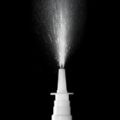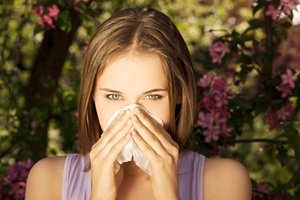
Previously on this blog, we wrote about how fall allergy season is beginning up to three weeks earlier than usual and is expected to be more severe due to climate change. But, according to Oklahoma television station KFOR-TV, there are other factors that are contributing to a worsening of ragweed allergy symptoms, such as the amount of heavy rainfall that has hit certain parts of the United States this summer.
"All the rain has […] helped weeds and other plant materials to grow and that's going to lead to increased levels this fall," Dr. Gregory Metz of the Oklahoma Allergy and Asthma Clinic told the source. "As that pollen gets into the air when you breathe it in, it could lead to sneezing, itching, watery eyes, itchy throat and difficulty breathing."
To find out if you're allergic to ragweed, it's recommended that you see a physician who specializes in allergies and can perform a skin test on you. This typically consists of having your skin pricked with tiny needles to determine if it swells or reacts to different allergens. While it certainly doesn't sound pleasant, it's the best way to figure out what exactly it is that you're allergic to.
Unfortunately, there is no cure for allergies at this time, but symptoms can be prevented and treated using a holistic approach. The first step is scheduling an appointment with your allergy specialist and taking any medications that have been prescribed to you. Then, there are actions you can take around the house to reduce the presence of irritants, like investing in hypoallergenic bedding to ensure that your allergies don't interfere with your sleep.









